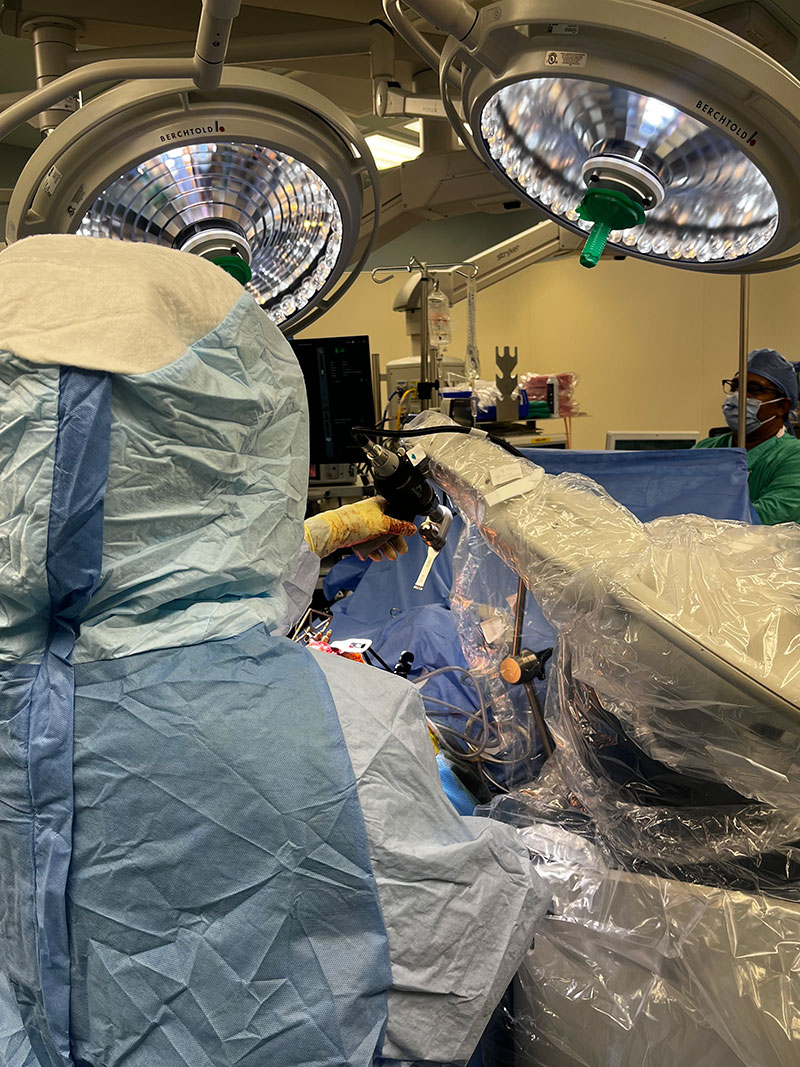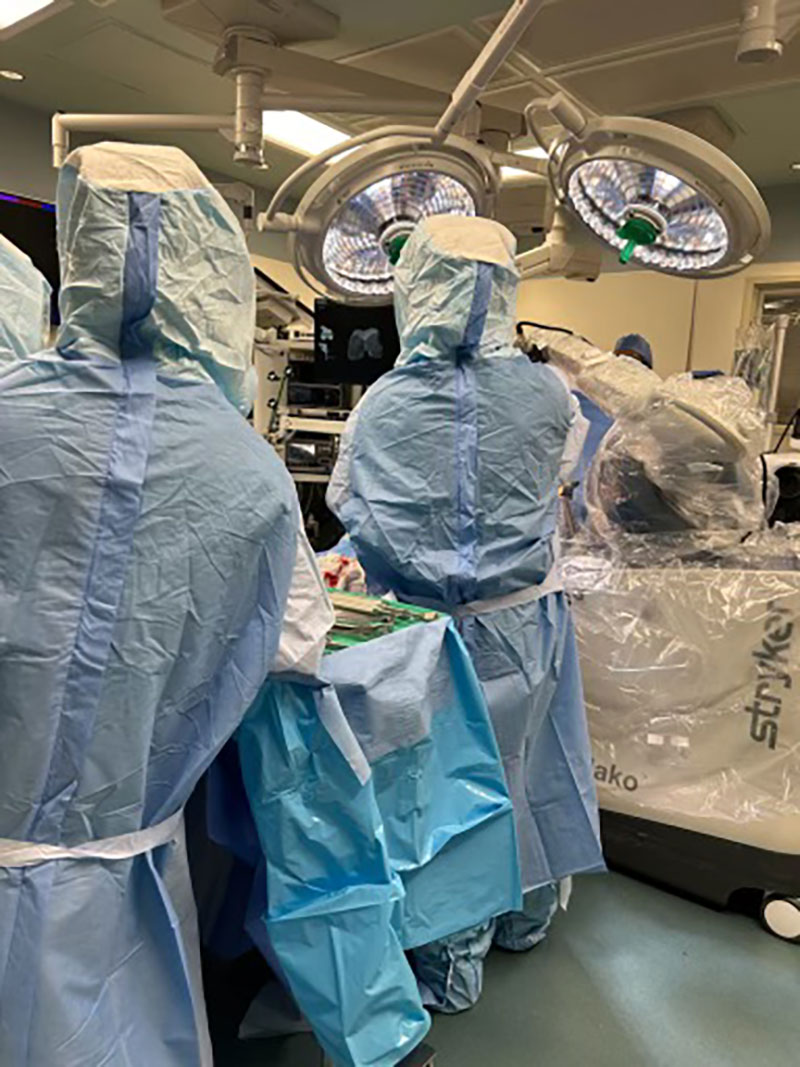Mako Robotic Surgery

 How Mako Robotic Surgery technology improves
the outcomes from hip joint replacement surgery
How Mako Robotic Surgery technology improves
the outcomes from hip joint replacement surgery
When non-surgical treatment options, such as physical therapy and injections, have failed to provide relief of hip pain, most patients will need to explore hip or knee replacement surgery to retain the ability to walk without pain.
The Mako Robotic System enables the joint replacement surgeon to improve the fit of the artificial implant to the individual’s unique anatomy. A CT scan of the hip joint is used to generate a 3D virtual model. The virtual model is loaded into the Mako System software and used by the surgeon to create the best fit of the hip implant.
It’s important to understand that the Mako robotic arm does NOT make decisions or movements on its own without the surgeon guiding the robotic arm. The Mako Robotic System improves the accuracy surgery and creates the best fit of the artificial joint. This improves the balance of the hip joint and enhances post-surgical outcome from hip replacement surgery.
The Mako Robotic System enables the joint replacement surgeon to map out the patient’s hip joint and make intricate adjustments during joint replacement surgery for a better fit of the artificial implant.
 How the Mako Robotic Surgery System is used in joint replacement
How the Mako Robotic Surgery System is used in joint replacement
Before surgery, a CT scan of the hip or knee joint is taken to generate a 3D virtual model of the patient’s unique anatomy. The 3D image helps the doctor see areas that wouldn't typically be visible by x-ray. This additional information helps the joint replacement doctor determine the optimal size of the implant, placement and positioning of the implant, and the precise amount of bone or cartilage to be removed or shaped during surgery. The robotic system provides a higher level of precision than the human eye and enables the joint surgeon to preserve bone during the hip replacement surgery.
The Mako Robotic-Arm Assisted Technology uses a CT scan to create patient-specific 3D modeling. This provides a higher level of precision to the choice of hip implant size, as well as the orientation and alignment of the hip implant in the patient’s hip socket.
During joint replacement surgery, the orthopedic surgeon guides Mako’s robotic arm to remove the diseased arthritic bone and cartilage from the joint, preparing the joint for the artificial joint implant. The Mako robotic arm then guides the implant at the specific angle, ensuring the proper placement and alignment of the implant.
This bone-sparing capability enables the Mako Robotic System to be valuable in knee replacement surgery and total hip replacement surgery.
The Mako Robotic-Arm Assisted Technology was acquired by Stryker in December 2013 to complement its orthopedic surgery product line.
In summary, the Mako Robotic System has benefits including increased accuracy and alignment, less blood loss, and better outcomes with higher activity scores post-surgery in joint replacement.
